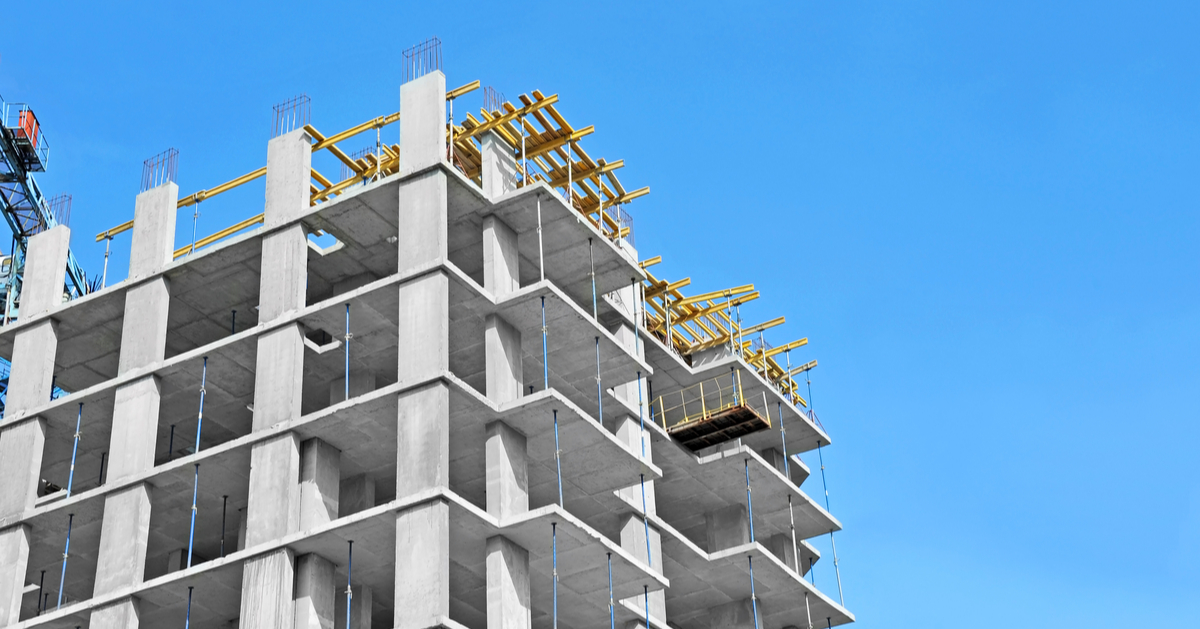During the construction of a building, depending on its use, elevator cab designs may be a bigger worry than the possibility of concrete corrosion. But elevators are only as good as the foundation of the building, and that applies to every facet of your structure. Improvements will most likely be needed to repair and strengthen reinforced concrete structures over time. Depending on the type of concrete and location, additional restorations might be needed eventually. In some cases, the only requirement might be concrete strengthening; in other instances, new tactics such as the strengthening of concrete columns with fibers may need to be evaluated for their added benefits and long-term value. Let’s take a closer look at concrete strengthening, how it promotes stronger structural integrity, what to know when choosing materials, and a few other points of interest.
What Is Concrete Strengthening?
When an existing structure deteriorates, or alterations need to be made due to the form failing to serve its purpose, concrete strengthening is the best way to repair issues for long-term benefits. Generally, all concrete structures are reinforced with some type of material, but building owners will inevitably need high-rise maintenance of concrete structures that won’t break the budget. Reinforced concrete results when a steel reinforcement, usually a kind of steel bar, is used to increase the strength of the structure. To create reinforced concrete, building owners turn to carbon fiber strengthening of concrete and Fiber Reinforced Polymer Concentrate (FRP). Such solutions are available for use on reinforced concrete, steel, wood, and masonry load-bearing structures. However, in some cases, concrete strengthening additives are also needed to extend the life of the concrete, control setting and hardening, and fix the general structural behavior of the concrete.
When Is It Most Beneficial to Use?
Over time, a building can take quite a beating, its purpose can change, loads may increase, the local standards may evolve, or even historical structures may need more support. In response to this, repair and strengthening of reinforced concrete structures resist these stresses that would cause regular concrete to crack and crumble. While other resources, such as building waterproofing services, can help maintain a building for the short term, concrete strengthening will become a necessity. According to Structure Magazine, reinforced concrete will allow for the arrangements supported to have more comprehensive strength than traditional concrete, extending the long life service of the design. Using concrete strengthening, the steel supports added to larger systems will have a lower risk of erosion due to less water gradually entering the masonry work. Rather than reconstruct an entire building, it is much simpler to provide the proper reinforcements during initial construction and with all repairs.
How to Choose the Right Material
A key component in concrete maintenance is an evaluation of materials and knowing how building maintenance will reap the most beneficial results possible. For instance, evaluating how the structure needs to be strengthened will guide the selection of proper materials for the job.
Fiber-reinforced polymer composite (FRP) materials can be useful as well. These are made of high-strength continuous fibers, such as glass, carbon, or steel wires, embedded in a polymer mix. The fibers provide the reinforcement, while the polymer matrix protects the fibers and transfers loads between the fibers.
Let’s consider another scenario. There may be a need to strengthen concrete columns in other situations, which can be done by reinforced concrete jacketing, steel jacketing, or FRP confining or jacketing. Columns often need to be strengthened once the load carried by the column has increased; the inclination is more than allowable, or when the compressive strength of the concrete or the type and percentage does not meet evolving code requirements. It’s up to each company to thoroughly evaluate the best ways to strengthen their assets over time, which means choosing the right form of reinforcement can literally make or break your building. That’s why it is important to choose a partner that can help your team increase property value by handling everything related to high-rise maintenance.
Improve the Strength of Your Concrete by Choosing the Right Building Maintenance Partner
When looking for a maintenance partner, it can be overwhelming and frustrating to know who is the best fit. Both interior maintenance and exterior maintenance should be a top priority when taking care of a building in every aspect possible. Working with a trustworthy partner is always the goal. Depending on the job type, the best partner can easily achieve reinforcement through carbon fiber strengthening of concrete, jacketed concrete strengthening, or even fiber-reinforced polymer composites. It is more beneficial to add structural modifications to a building rather than build a new building from the ground up, pardon the pun. It’s always a great strategy to keep a building up to date before restorations are needed. Request a consultation with Valcourt Building Services today to improve the strength and integrity of your new and existing concrete assets.
